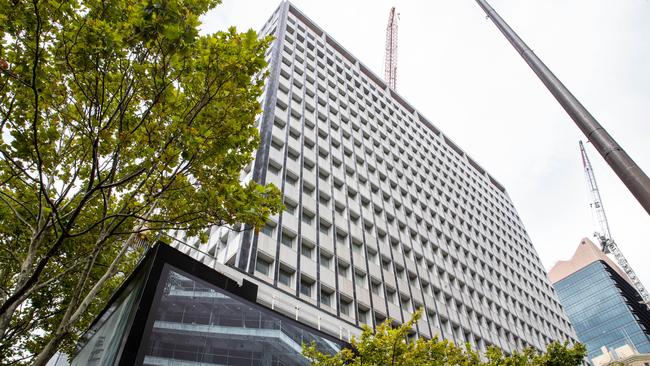Mortgage stress climbs amid inflation, interest rate pressures
A major Australian bank has issued a grim warning on where rates are heading, with the next cut not predicted until 2025.
Interest Rates
Don't miss out on the headlines from Interest Rates. Followed categories will be added to My News.
Any relief for household borrowers in the form of rate cuts remains a distant prospect with economists and investors not tipping an easing of interest rates until next year.
Jettisoning his forecasts for an easing of interest rates in November, ANZ’s head of Australian economics Adam Boyton on Tuesday said the recent run of economic data including firmer-than-expected household consumption, continued resilience in the jobs market and still persistent inflation would delay rate cuts until February next year.
“It’s not that monetary policy isn’t working. It is,” Mt Boyton wrote in a note to clients.
“The economy has clearly slowed, particularly across private final demand. It’s for this reason that we think a rate hike remains unlikely.
“However, getting an appropriate balance between the level of demand and supply is likely to take a little longer than expected.”

While ANZ’s economists retained their projections for two follow-up rate cuts after February, it warned that the risks to that projection were skewed to the downside, meaning a total of two cuts worth 50 basis points was more likely than four cuts worth 100 basis points.
Investors are more bearish over the timing of rate cuts with money markets fully priced for 25 basis points worth of easing in July next year.
Economists and analysts are also closely watching for the release of fresh US inflation data on Wednesday and a meeting of the US’ central bank, the Federal Reserve, on Thursday (AEST), for clues on the path of rate cuts in the world’s largest economy.
After jobs growth continued to surprise last month and highlighted the continued resilience of the US economy in the face of stubbornly persistent inflation and elevated borrowing costs, it is widely expected the Fed will keep rates on hold.
Fed officials will also submit new interest rate forecasts, which are anticipated to show a majority of members now see two rate cuts by year’s end, rather than the three cuts that were projected by a narrow majority at the central bank’s March meeting.
Mortgage stress climbs amid rates pressure
While mortgage stress is climbing off the back of cost of living pressures and high interest rate levels, the lion’s share of household borrowers are meeting their loan repayments, the Australian Council of Financial Regulators has said.
The council, which coordinates the management of Australia’s financial system and is chaired by RBA governor Michele Bullock, warned on Tuesday that while borrowers in the main had handled the increase in interest rates, the proportion of mortgagors falling into arrears had climbed.
“While budget pressures from inflation and interest rates continue to be widely felt, with many households making adjustments to their finances, most borrowers have continued to meet their debt repayments,” the council said in its statement following its quarterly review of the financial sector.
“Members observed that the share of borrowers falling behind on mortgage payments has continued to rise, as have financial hardship applications, but from a low level.”

Starting in May 2022, the RBA aggressively raised interest rates 13 times to a 12-year high as it attempted to contain inflationary pressures, heaping higher costs on household borrowers.
Since November, the central bank has left the cash rate on hold at 4.35 per cent as it awaits further evidence that inflation is returning to its 2 to 3 per cent target band.
Risks from domestic lending to commercial real estate (CRE) were also considered by the council at its quarterly meeting.
“Members observed that these remained contained due to banks’ low exposures, conservative lending practices and the relatively strong financial positions of CRE owners,” the council added
Responding to the statement, Treasurer Jim Chalmers noted that measures slated to come into effect on July 1 would ease the pressures faced by households.
“People are under the pump and that’s why our budget and our economic plan is all about easing cost of living pressures with tax cuts for every taxpayer and energy rebates for every household and for a million small businesses,” Dr Chalmers said.

Data released by the Australian Securities and Investments Commission (ASIC) last month showed the number of hardship notices – where a borrower informs their lender they cannot meet their loan obligations – had risen 54 per cent in the final three months of 2024 when compared with the corresponding quarter a year earlier.
In May, the ASIC urged banks to increase the level of support it provided struggling borrowers after a review found accessing hardship assistance was too hard for customers to obtain help.
While the corporate regulator’s review found that experience differed between lenders, in the worst cases some banks had ignored requests for assistance, in effect “abandoning customers who needed their support”.
Originally published as Mortgage stress climbs amid inflation, interest rate pressures




